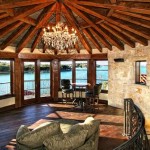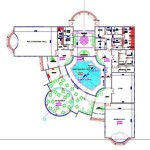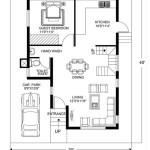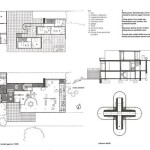Really Cool House Plans: Exploring Innovative Design and Functionality
House plans, the architectural blueprints defining the layout and structure of a dwelling, are much more than mere technical drawings. They represent a vision, a lifestyle, and a significant financial investment. In an era where personal expression and functional living are paramount, “really cool” house plans transcend traditional layouts, embracing innovation, sustainability, and a deep understanding of modern living needs. These plans prioritize aesthetics, efficiency, and adaptability, creating homes that are both visually stunning and remarkably practical.
The definition of “really cool” in the context of house plans is subjective and varies depending on individual preferences and priorities. However, several key elements consistently contribute to a design that is considered exceptional. These include innovative use of space, incorporation of natural light and outdoor elements, sustainable design principles, and customization options to suit specific lifestyles and needs. Let’s delve into each of these aspects to understand how they contribute to truly remarkable house plans.
Maximizing Space and Flow with Open-Concept Designs
One of the hallmarks of cool house plans is the emphasis on maximizing usable space and creating a seamless flow between different areas. Open-concept designs, which eliminate or minimize walls between living rooms, dining rooms, and kitchens, are a popular way to achieve this. This approach fosters a sense of spaciousness and encourages social interaction. It also allows for greater flexibility in furniture arrangement and interior design.
Beyond simply removing walls, successful open-concept plans carefully consider traffic patterns and zoning. Thoughtful placement of furniture and architectural elements, such as islands or changes in flooring, can subtly define different areas within the larger space without compromising the open feel. This creates a harmonious balance between connection and separation.
Consider the integration of flexible spaces that can adapt to changing needs. A room designated as a home office could easily transform into a guest bedroom or a playroom with minimal effort. This adaptability is crucial for modern families who require homes that can evolve with their lifestyles.
Furthermore, strategic use of vertical space can significantly enhance the perceived size of a home. High ceilings, loft areas, and strategically placed windows can create a sense of grandeur and openness, even in smaller dwellings. Mezzanines and multi-level designs can add visual interest and create unique spaces within the home.
Integrating Nature and Natural Light for Enhanced Well-being
Cool house plans often prioritize the integration of nature and natural light, recognizing their profound impact on well-being. Large windows, skylights, and strategically placed glass doors are used to flood the interior with sunlight, reducing the need for artificial lighting and creating a bright and cheerful atmosphere. This connection to the outdoors can significantly improve mood, productivity, and overall quality of life.
Outdoor living spaces, such as patios, decks, and balconies, are seamlessly integrated into the design, extending the living area and blurring the boundaries between inside and outside. These spaces provide opportunities for relaxation, entertainment, and connection with nature. Features like outdoor kitchens, fireplaces, and comfortable seating areas transform these spaces into true extensions of the home.
Incorporating natural elements into the interior design further enhances the connection to nature. Using natural materials like wood, stone, and bamboo creates a warm and inviting atmosphere. Adding indoor plants and creating green walls can bring life and vibrancy into the home, purifying the air and improving the overall aesthetic.
Passive solar design principles are often employed to maximize the benefits of natural light and minimize energy consumption. This involves orienting the house to take advantage of sunlight during the colder months and shading it during the hotter months. This reduces the reliance on heating and cooling systems, saving energy and reducing environmental impact.
Prioritizing Sustainability and Energy Efficiency
Sustainability is an increasingly important consideration in modern house plan design. Cool house plans incorporate eco-friendly features and materials to minimize environmental impact and reduce energy consumption. This can involve using sustainable building materials like recycled wood, bamboo, and reclaimed materials, as well as incorporating energy-efficient appliances and fixtures.
Energy efficiency is achieved through a variety of strategies, including proper insulation, energy-efficient windows and doors, and high-efficiency heating and cooling systems. Solar panels can generate electricity, reducing reliance on fossil fuels. Rainwater harvesting systems can collect and store rainwater for irrigation and other non-potable uses, conserving water resources.
Passive heating and cooling strategies, such as proper orientation, shading, and natural ventilation, can further reduce energy consumption. Green roofs, which are covered with vegetation, provide insulation, reduce stormwater runoff, and create habitat for wildlife. These sustainable features not only benefit the environment but also reduce utility bills and improve the overall health and comfort of the home.
Furthermore, design considerations extend to long-term durability and reduced maintenance. Using durable materials and construction techniques minimizes the need for frequent repairs and replacements, further reducing the environmental impact over the lifespan of the home. This holistic approach to sustainability ensures that the home is not only environmentally friendly but also economically sound.
Smart home technology can also contribute to sustainability by automating energy consumption and providing real-time monitoring of energy usage. Smart thermostats, lighting controls, and appliance controls can optimize energy efficiency and reduce waste. This technology empowers homeowners to make informed decisions about their energy consumption and reduce their carbon footprint.
Customization and Adaptability for Personalized Living
A crucial aspect of “really cool” house plans is the ability to customize and adapt the design to suit individual lifestyles and needs. Generic layouts are often inflexible and fail to meet the specific requirements of different families. Customization allows homeowners to create a space that is truly their own, reflecting their personality and accommodating their unique needs.
This customization can involve modifying the layout to create specific rooms or spaces, such as a home office, a hobby room, or a dedicated workout area. It can also involve adding or removing walls to create a more open or compartmentalized layout. The ability to adjust the size and configuration of rooms allows homeowners to tailor the design to their lifestyle.
Beyond layout modifications, customization extends to the selection of materials, finishes, and fixtures. Homeowners can choose from a wide range of options to create a unique and personalized aesthetic. This includes selecting flooring, cabinetry, countertops, lighting fixtures, and appliances that reflect their personal style and preferences.
Adaptability is also key to creating a home that can evolve with changing needs. Flexible spaces that can be easily reconfigured to serve different purposes are essential for long-term livability. Designing rooms with multiple functions in mind allows homeowners to adapt the space to suit their changing lifestyles. For example, a room that is initially used as a children's playroom could later be converted into a home office or a guest bedroom.
Accessibility considerations are also important for ensuring that the home can be enjoyed by people of all ages and abilities. Incorporating features like wider doorways, ramps, and grab bars can make the home more accessible for people with mobility challenges. This forward-thinking approach ensures that the home remains livable and comfortable for years to come.
In conclusion, "really cool" house plans represent a departure from traditional designs, embracing innovation, sustainability, and personalization. By maximizing space and flow, integrating nature and natural light, prioritizing sustainability and energy efficiency, and emphasizing customization and adaptability, these plans create homes that are not only visually stunning but also remarkably functional and comfortable. They reflect a deep understanding of modern living needs and a commitment to creating homes that enhance the lives of their occupants.

Cool House Plans With S Houseplans Blog Com
The Most Beautiful House Plans Right Now Houseplans Blog Com

Modern And Cool House Designs With Open Floor Plans Blog Eplans Com
The Most Beautiful House Plans Right Now Houseplans Blog Com

Modern And Cool House Designs With Open Floor Plans Blog Eplans Com
The Most Beautiful House Plans Right Now Houseplans Blog Com
The Most Beautiful House Plans Right Now Houseplans Blog Com

Cool Meadow Farm House Plan Archival Designs

Cool House Plans With S Houseplans Blog Com

Modern And Cool House Designs With Open Floor Plans Blog Eplans Com








